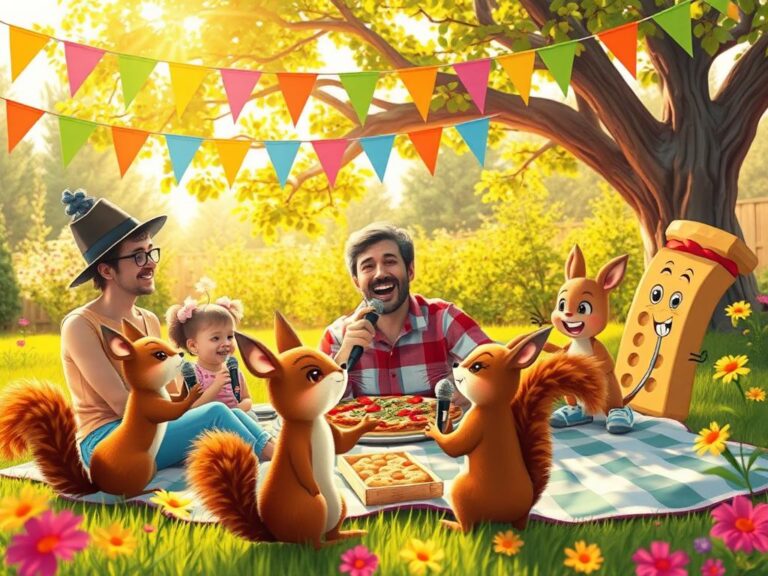Front Yard Landscaping Plans: Transforming Your Outdoor Space with Style and Functionality
Introduction
Front yard landscaping plans can be the key to unlocking the potential of your outdoor space.
Well-designed landscapes not only enhance the beauty of your home but also create an inviting atmosphere for family and friends.
Whether you aim for a tranquil retreat or a vibrant display of color, there are countless ideas to inspire your creativity and investment.
In this article, we’ll explore various landscaping techniques, sustainable practices, and innovative decor to ensure your front yard reflects both your personality and neighborhood charm.
From planting native flowers to incorporating unique hardscaping elements, let’s dive deep into front yard landscaping to discover how to bring your vision to life!
Understanding Your Yard’s Needs
Before embarking on any front yard landscaping plans, it’s crucial to assess your space.
Consider your yard’s size, shape, sun and shade areas, and any existing plants or structures.
Evaluate your goals—whether you desire vibrant flower beds, a functional outdoor space, or a low-maintenance garden.
An insightful study published by the American Horticultural Society highlights that taking these factors into account increases the chance of your landscaping being successful, as it allows you to choose plants and design elements suited to your unique environment.
Additionally, soil quality is vital in determining how well your plants will thrive.
Conducting a soil test can identify pH levels, nutrient content, and other important components that influence plant health.
Choosing the Right Plants
The plants you select will define the aesthetic of your front yard.
Opt for native plants that require less water and maintenance while attracting local wildlife.
Here are a few suggestions to create a thriving, eco-friendly environment:
- *Purple Coneflower*: These perennial beauties are drought-tolerant and can blossom throughout summer.
- *Black-eyed Susan*: Perfect for sunny spots, this hardy flower attracts butterflies and bees.
- *Asters*: These late-blooming flowers extend your garden’s bloom time into autumn, adding color as other plants fade.
When planning your plant selection, consider your yard’s sun exposure, the amount of rainfall it receives, and any pest challenges you may encounter.
Furthermore, using a combination of annuals and perennials achieves both variety and ongoing color throughout the seasons.
As renowned landscape architect James Corner famously said, “Good design promotes good behavior.” By thoughtfully designing a plant combination, you’ll create a welcoming atmosphere that encourages outdoor interaction.
Creating Structure with Hardscaping
In addition to plants, hardscaping features can provide structural integrity and visual interest.
Integrating pathways, retaining walls, and decorative stones builds dimensionality in your yard.
Consider using locally sourced materials to enhance sustainability and connect your landscape with the surrounding environment.
For example, you might create:
– A Curved Walkway: Instead of straight lines, use pavers to form a natural-looking path leading to your front door.
– Stone Retaining Walls: Utilize them to create tiered gardens while preventing soil erosion.
– Raised Flower Beds: Not only do they add height, but they also make tending to plants easier on the back.
Bold hardscaping elements serve to frame your gardens, guiding the eye and creating focal points.
As landscape designer Paul Bangay eloquently stated, “The garden is a reflection of who you are and the way you live.”
Incorporating Water Features
A water feature can create a delightful ambiance for your front yard landscape.
Consider installing a small pond, fountain, or birdbath to attract wildlife and foster a serene environment.
Not only do water features provide aesthetic appeal, but they can also create soothing sounds that mask unwanted noise from traffic or neighbors.
Additionally, water features supply energy-efficient irrigation for surrounding plants, further enhancing your sustainable approach.
According to an article from *Garden Design* magazine, incorporating water features into your landscape not only increases property value but can also provide relaxation benefits to homeowners.
For an inspirational touch, remember to integrate low-maintenance plants such as water lilies or bog plants to coexist in harmony with your water feature.
Exploring Edible Landscapes
Embrace the concept of edible landscaping to merge functionality with beauty.
Imagine walking out into your garden to pluck fresh herbs, fruits, or vegetables along with colorful blooms.
Edible plants can be both visually appealing and sustainable:
– Fruit Trees: Plant a row of dwarf fruit trees for a lush visual while producing delicious homegrown snacks.
– Herb Gardens: Use raised planter boxes to cultivate aromatic herbs like basil, rosemary, and thyme that add both flavor to your dishes and fragrance to your yard.
– Colorful Vegetable Beds: Grow a mixture of colorful vegetables like carrots, lettuce, and peppers for a vibrant display.
Steve Lacy, an accomplished landscape designer, suggests, “Every garden should be a reflection of nature, filled with scents and colors to indulge the senses.”
Utilizing edible plants allows you to nurture a vibrant garden while enjoying culinary benefits!
Seasonal Considerations for Your Landscape
Incorporating seasonal decor into your front yard landscaping can keep your yard lively.
Swap out decorations with each season, such as:
– Pumpkins and scarecrows in autumn,
– Holiday lights and wreaths in winter,
– Colorful flowers and garden gnomes in spring and summer.
This simple act makes a big difference in keeping your yard engaging and enjoyable for everyone.
Not to mention, a well-dressed yard can make a significant impact on curb appeal.
As landscape designer and author, John Brookes, once said, “Landscape is the poetry of the earth.”
To make the most of seasonal changes, plan ahead by selecting plants that bloom at various times throughout the year.
This way, your landscape remains dynamic, encouraging visitors to admire the evolving shades over the months.
Enhancing Curb Appeal with Color
A key component of successful front yard landscaping is creating eye-catching flower beds.
Using a combination of annuals and perennials will ensure vibrant, seasonal displays.
Mixing different colors and textures creates an inviting aesthetic while enhancing your home’s value.
Utilize contrasting plants for better visual interest—try pairing bold sunflowers with delicate, trailing vine flowers.
Moreover, organizing flowers in clusters will allow for a more immersive experience as visitors approach your home.
The famous horticulturist, Gertrude Jekyll, aptly stated, “Color is the primary element of the garden, and by planting flowers in separated groups, you create more of an illusion than a realistic rendering.”
Experiment with your planting arrangements to see what combinations resonate with you and your environment.
Creative Lighting Solutions
Landscaping at night can be just as breathtaking as during the day with well-placed lighting solutions.
Design a lighting scheme that highlights your pathways, trees, and flower beds to create a welcoming atmosphere post-sunset.
Utilizing solar-powered lights is a sustainable option that provides effective illumination while reducing energy costs.
Consider strategically placing lights near:
- Your entrance or pathway to provide safety and guidance.
- Accent trees and shrubs to create dramatic shadows and visual interest.
- Water features to emphasize their beauty and tranquility.
Incorporating lighting elements will enhance the overall ambiance, allowing you to enjoy your garden long into the evening.
Renowned landscape architect, landscape architect David K. Gardiner, once remarked, “Lighting can change an environment completely; it brings it to life.”
Personalizing Your Space with Unique Features
Incorporating garden art, unique sculptures, or decorative accents can showcase your personal style, enhancing your front yard’s character.
Consider adding:
– A customized welcome sign,
– Whimsical garden gnomes,
– Birdhouses or feeders to attract feathered friends.
Moreover, bamboo fencing can add an elegant touch while providing privacy.
Personalizing your yard creates an extension of your home, fostering connections with your surroundings.
Remember to balance aesthetics with practicality—ensure your unique features do not overcrowd the space or obstruct pathways.
As landscape designer and artist, Thomas Rainer, once noted, “A garden is not a place to escape but an invitation to embrace nature.”
Maintaining Your Front Yard
Landscaping maintenance is essential to ensure a healthy and thriving front yard.
Regular practices include:
– Watering: Ensure your plants receive adequate moisture, particularly during dry spells.
– Pruning: Regularly trim foliage to encourage new growth and prevent overcrowding.
– Weeding: Remove invasive plants to protect the health of your garden.
– Fertilizing: Apply appropriate nutrients to support plant health and vitality.
Staying engaged with your garden will allow you to enjoy and appreciate its beauty while ensuring longevity.
According to the Royal Horticultural Society, “A little maintenance goes a long way in fostering a visually appealing and healthy landscape.”
Conclusion
Front yard landscaping plans hold the power to transform your outdoor space into a captivating and functional environment.
By understanding your yard’s needs, selecting the right plants, incorporating hardscaping and water features, and personalizing your design, you create a welcoming retreat that reflects your unique personality.
Investing time and effort into your front yard landscaping not only enhances curb appeal but also provides an inviting atmosphere that enriches everyday life.
Remember that your yard serves as a canvas—a place for creativity, connection, and, ultimately, a beautiful reflection of you!
FAQ
What are some low-maintenance plants for landscaping?
When selecting low-maintenance plants, consider native species like coneflowers, black-eyed Susans, and ornamental grasses.
These plants require less water and care while thriving in local conditions.
How can I improve the curb appeal of my front yard?
To enhance curb appeal, focus on creating colorful flower beds, improving pathways with hardscaping, and maintaining an organized layout.
Consider adding unique touches like garden art, seasonal decor, and lighting to captivate visitors.
What is edible landscaping?
Edible landscaping refers to integrating fruit, vegetables, and herbs into your yard along with traditional flowers.
This design strategy makes the landscape functional, allowing you to enjoy fresh produce without sacrificing beauty.
How do I create a cohesive look in my landscape design?
To achieve a cohesive landscape design, stick with a consistent color palette and choose plants with similar textures.
This uniformity helps ensure that your space feels harmonized and polished.
What seasonal changes should I consider for my front yard landscaping?
Plan for seasonal changes by selecting plants that bloom throughout the year and swapping out decorations to reflect each season.
This attention to detail creates a continually engaging outdoor area.
Feel free to share your thoughts, experiences, or any other questions in the comments below!







